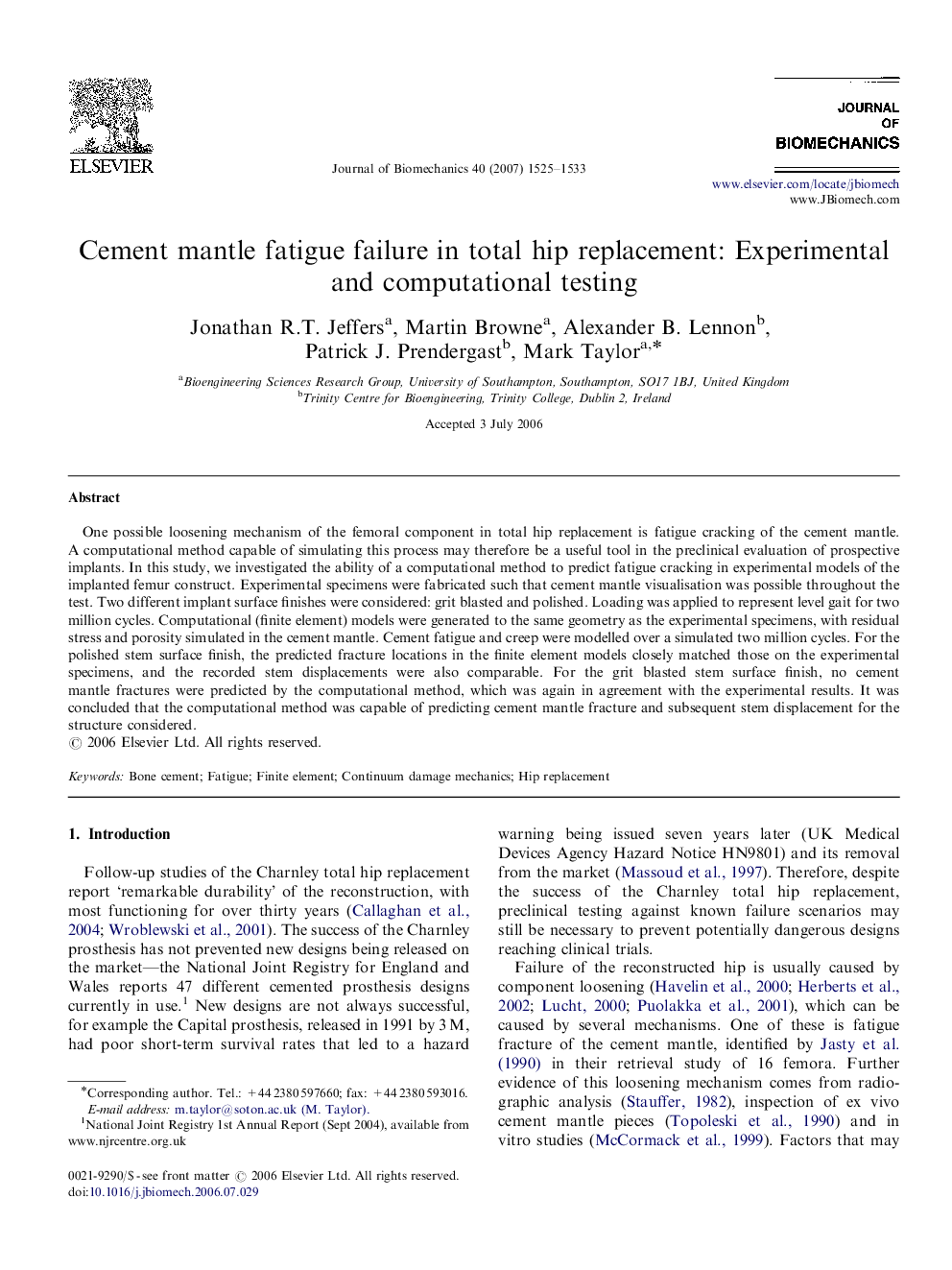| Article ID | Journal | Published Year | Pages | File Type |
|---|---|---|---|---|
| 874510 | Journal of Biomechanics | 2007 | 9 Pages |
One possible loosening mechanism of the femoral component in total hip replacement is fatigue cracking of the cement mantle. A computational method capable of simulating this process may therefore be a useful tool in the preclinical evaluation of prospective implants. In this study, we investigated the ability of a computational method to predict fatigue cracking in experimental models of the implanted femur construct. Experimental specimens were fabricated such that cement mantle visualisation was possible throughout the test. Two different implant surface finishes were considered: grit blasted and polished. Loading was applied to represent level gait for two million cycles. Computational (finite element) models were generated to the same geometry as the experimental specimens, with residual stress and porosity simulated in the cement mantle. Cement fatigue and creep were modelled over a simulated two million cycles. For the polished stem surface finish, the predicted fracture locations in the finite element models closely matched those on the experimental specimens, and the recorded stem displacements were also comparable. For the grit blasted stem surface finish, no cement mantle fractures were predicted by the computational method, which was again in agreement with the experimental results. It was concluded that the computational method was capable of predicting cement mantle fracture and subsequent stem displacement for the structure considered.
